It looks like you're using an Ad Blocker.
Please white-list or disable AboveTopSecret.com in your ad-blocking tool.
Thank you.
Some features of ATS will be disabled while you continue to use an ad-blocker.
2
share:

Game Of Thrones slave army:the Unsullied
As a rabid fan of Game Of Thrones, Star Gate and the movie 300 (the sequel sucked!!) I was constantly reminded of how very different Eastern Armies and societies organized themselves,off-course Star Gate was set in some alternate reality where the Gods came down and Enslaved mankind taking or giving spark to Nile Valley civ, but expanded upon in the T.V series to include all other civs and geographical areas,Game of Thrones is pure fiction but seemed to incorporate some cultural practices of the past,the Westerners looked like quasi medieval Europeans,the Easterners exotic but very oppressive slave based societies.
Afro-Asiatic slavery the act of acquiring or becoming a slave in both the east and the west was very similar.
Lost a battle you ended up in chains.
Kidnapped.
Lost of freedom through unpaid debt .
Sold your self or family members into slavery for a better life.
A serf was a slave so technically most of humanity that lived in large centralized societies would be slaves, see Greeks especially Spartans,which the movie unjustly glorified as being freedom loving ,the Romans were notorious for having large scale slave plantations,but rarely in Western Slave societies were there any chance of upward mobility.
In the East in Africa and Asia while brutal and demeaning, there was a chance of upward mobility to the highest echelons of society, it seemed that certain professions,from royal Eunuch and educated slaves often led high office in which you bow before the king but all others both free and slave bowed to you,but the quickest way to achieve upward mobility was in the Army or royal body guard.
Western societies rarely entrust such positions of high importance and prominence to Slaves, yes there were educated slaves in Greece and Rome who accompanied the kings tutored their royal brats and were held in high esteem but that line was never blurred, not so in Afro-Asiatic societies where the King or emperor was often of slave ancestry, the concept of bastardization was quite foreign to them your child was your child his mother's status or original status was of little consequence,btw these slave mothers often exerted massive influence in palace politics and manipulated the King if he was not careful.
edit on 21-9-2014 by Spider879 because: (no reason given)
a reply to: Spider879
A college lecturer told me that the 'right of kingship' was nothing as it is today. It was held that an elected person who was not paid, but kept by society had to run the people. The rule lasted as long as the 'reign' was successful in that the land had to be managed and kept fertile, producing well, the rivers and seas all have to be managed well to produce and be kept well banked etc.
It was an altruistic role and not hereditary. Once the reign became hereditary a state of grandeur took over and whether it was a good king or not you were stuck with it because he controlled the enforces to keep you working and taxed you. In short you had lost democracy to a despot and has it been worth it ever since - IMHO no.
I have wondered about the differencces you talk about and suddenly one of the oldest 'bill of rights' from somewhere in the ME popped into my mind. It was carved into stone which gave slaves freedom and laid out of turn of the law. It was brilliant but I cannot remember who or where to look it up.
The west lost its tribalism which is still so strong in the East and I suspect there was tribal pride involved in soldiering which we have lost all memory of. Also in the East people breed easily in a warmer climate and the west weather was pretty inclement and the ice age affected a lot of our environment, traditions and attitude. I suspect there are a number of differing factors that make the synergistic blend you are talking about for both the East and West. One major difference between East and West can be demonstrated by the differences in parental approaches to education. Although many western families do involve themselves in their children's education, nearly all Eastern people do, in fact one teacher on tv said it was hard to get them out of the classroom whilst it was hard to get western parents to come to parents evenings etc.
A college lecturer told me that the 'right of kingship' was nothing as it is today. It was held that an elected person who was not paid, but kept by society had to run the people. The rule lasted as long as the 'reign' was successful in that the land had to be managed and kept fertile, producing well, the rivers and seas all have to be managed well to produce and be kept well banked etc.
It was an altruistic role and not hereditary. Once the reign became hereditary a state of grandeur took over and whether it was a good king or not you were stuck with it because he controlled the enforces to keep you working and taxed you. In short you had lost democracy to a despot and has it been worth it ever since - IMHO no.
I have wondered about the differencces you talk about and suddenly one of the oldest 'bill of rights' from somewhere in the ME popped into my mind. It was carved into stone which gave slaves freedom and laid out of turn of the law. It was brilliant but I cannot remember who or where to look it up.
The west lost its tribalism which is still so strong in the East and I suspect there was tribal pride involved in soldiering which we have lost all memory of. Also in the East people breed easily in a warmer climate and the west weather was pretty inclement and the ice age affected a lot of our environment, traditions and attitude. I suspect there are a number of differing factors that make the synergistic blend you are talking about for both the East and West. One major difference between East and West can be demonstrated by the differences in parental approaches to education. Although many western families do involve themselves in their children's education, nearly all Eastern people do, in fact one teacher on tv said it was hard to get them out of the classroom whilst it was hard to get western parents to come to parents evenings etc.
a reply to: Shiloh7
Would this be it? Code of Hammurabi
Code of Hammurabi
Would this be it?

The Code of Hammurabi is a well-preserved Babylonian law code of ancient Mesopotamia, dating back to about 1772 BC. It is one of the oldest deciphered writings of significant length in the world. The sixth Babylonian king, Hammurabi, enacted the code, and partial copies exist on a human-sized stone stele and various clay tablets. The Code consists of 282 laws, with scaled punishments, adjusting "an eye for an eye, a tooth for a tooth" (lex talionis) as graded depending on social status, of slave versus free man. Nearly one-half of the Code deals with matters of contract, establishing, for example, the wages to be paid to an ox driver or a surgeon. Other provisions set the terms of a transaction, establishing the liability of a builder for a house that collapses, for example, or property that is damaged while left in the care of another. A third of the code addresses issues concerning household and family relationships such as inheritance, divorce, paternity and sexual behavior. Only one provision appears to impose obligations on an official; this provision establishes that a judge who reaches an incorrect decision is to be fined and removed from the bench permanently. A handful of provisions address issues related to military service.
One nearly complete example of the Code survives today, on a diorite stele in the shape of a huge index finger, 2.25-metre (7.4 ft) tall (see images at right). The Code is inscribed in the Akkadian language, using cuneiform script carved into the stele. It is currently on display in the Louvre, with exact replicas in the Oriental Institute at the University of Chicago, the library of the Theological University of the Reformed Churches (Dutch: Theologische Universiteit Kampen voor de Gereformeerde Kerken) in The Netherlands, the Pergamon Museum of Berlin and the National Museum of Iran in Tehran.
In the East Slave soldiers came from many different back grounds often served in their own units or corps,carried their own banners serving under
their own commanders who got and carried out his orders from the king,one reason for having a slave army is they usually are from somewhere else and
have no allegiance to anyone but the king if the king decided he wanted to burn a town or village in his kingdom what did it matter to them they are
not your family or kin,life may be difficult as a soldier but you were paid and usually wealthier then the freeborn locals you were sent to
suppressed and policed,it was thus not uncommon to have slave governors in far-flunged regions of the Empire ,The Malistine,Songhai and Ottoman
Turks,the Arabs,Indians and Chinese all used that same system, I don't know if most folks realised this but Zheng Ho the famous admiral was a Muslim a
eunuch and a slave.
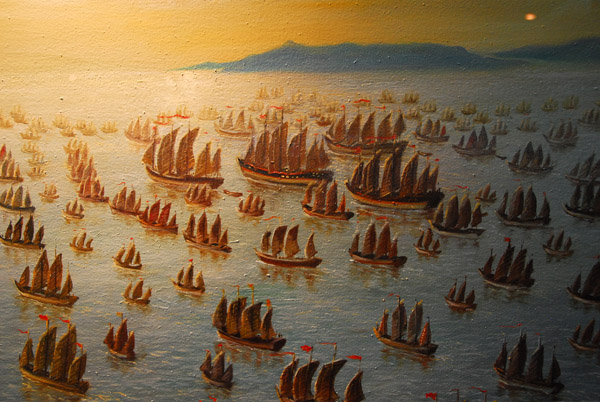
Zheng Ho's fleet that scowered the east opening up the entire east for business from East Africa to China,some said some of his ship may have made land fall in the Americas.
Like I said above slaves came from all lands the Ottoman kept shock troops of white slaves called Janissaries
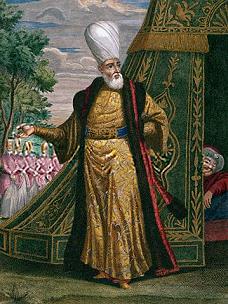
Commander
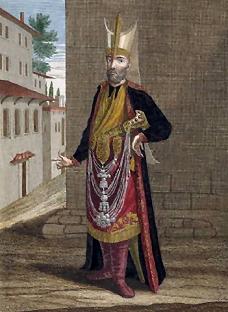
Officer
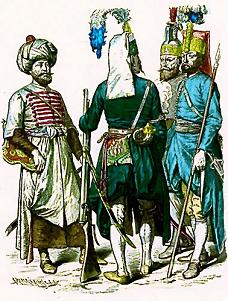
Soldiers
i-cias.com...
In Medieval Egypt another group would be known as the Mamluk who would at first clash with Slaves Solders from the Sudan under the later Fatimid dynasty in Egypt both competing for prominence,this dynasty saw Slaves who became rulers to Eunuchs they include a Black Slave from Sudan who took over from the previous ruler as sole ruler side lining the dead ruler's two sons,he was succeeded by a Killis the Jew also a Eunuch.
The same kind of clashes between White and Black slave soldiers would take place in Morocco where competition for power was intense.
en.wikipedia.org...
I normally do not source Wiki for history stuff but this is much in line with what I know.

Zheng Ho's fleet that scowered the east opening up the entire east for business from East Africa to China,some said some of his ship may have made land fall in the Americas.
Like I said above slaves came from all lands the Ottoman kept shock troops of white slaves called Janissaries

Commander

Officer

Soldiers
The Janissaries became famous for their military skills, but also because they were staffed by youths conscripted from Christian families in the Balkans. After the conscription they were defined as the property of the sultan, and practically all of them converted to Islam.
The Janissaries were subject to strict rules, limiting their freedom and demanding higher moral standards than usual in the society. In the first couple of centuries, they were forced to celibacy, but this would later change. The janissaries were not allowed to grow beard, which was the sign of a free man.
The need for the bey/sultan to form the Janissary corps, came from the fragility of an army put together by free men from many different tribes from areas often wide apart. Their allegiance were normally to their own tribal leaders, leaders that often were tempted to oppose the power of the sultan, and to find allies among the main enemies of the Ottoman empire.
At first the Janissaries were put together of war prisoners. But from 1420's young men were taken from their homes at an early age, and contact with their old communities were cut. This system was called devsirme. They were even denied contact with the normal society in the areas were they were stationed. Through their training, they were learned to put their allegiance to the bey/sultan. At least so was the intention. And despite strict rules, they enjoyed high living standards and a social status which intended to give logic and force to their loyalty.
i-cias.com...
In Medieval Egypt another group would be known as the Mamluk who would at first clash with Slaves Solders from the Sudan under the later Fatimid dynasty in Egypt both competing for prominence,this dynasty saw Slaves who became rulers to Eunuchs they include a Black Slave from Sudan who took over from the previous ruler as sole ruler side lining the dead ruler's two sons,he was succeeded by a Killis the Jew also a Eunuch.
The same kind of clashes between White and Black slave soldiers would take place in Morocco where competition for power was intense.
Domestic politics[edit]
Abu al-Misk Kafur,Or Kafur The Magnificent:
While Kafur held defacto control over Egypt, he operated behind the facade of Ikhshdid rulers. On his deathbed, ibn Tughj had appointed Kafur as guardian over his two sons. In 946, Kafur helped Anūdjūr secure the succession to ibn Tughj. And in 961, he helped ʿAlī ibn al-Ikhshīd Anūdjūr's younger brother (and his late master ibn Tughj's second) secure the Egyptian throne. Only in 966, following the death of ʿAlī, did Kāfūr publicly declare himself as the sole master of Egypt.[4]
Kafur, despite tremendous pressure on him, maintained stability inside Egypt. From 335/947-336/948, he fought and put down the rebellion by Ghalbūn. In 954 successfully averted an abortive coup d'état by Anūdjūr. He also survived the spread of subversive Ismāʿīlī propaganda against him. His ability to resolve internal political complications is considered as having signnificantly prolonged the lifespan of the Ikhshidids.
Foreign politics
One of Abu al-Misk Kafur's greatest achievements is his successful protection of the Ikhshidid establishment from the Hamdanids (in Syria), Fatimids (in northern Africa, to the west of Egypt), Qarmatians (in the Arabian peninsula), and the Nubians (from south of Egypt).[4]
Very early on Kafur's master, Muhammad ibn Tughj, trusted him to handle the military campaigns of Syria and Hejaz (in the Arabian peninsula). His military and diplomatic measures secured Damascus for the Ikhshidids (from the Hamdanids) in 947.[4] Sayf ad-Dawla, governor of Aleppo, had tried to run over Syria, but his efforts were frustrated by Kafur, and the former recognized the latter's lordship over parts of Syria.
He was also able to delay the Fatimid expansion into Egypt, frustrating the efforts of the latter's agents. So long as Kafur was alive, the Ikhsidid establishment kept the Fatimids at bay; upon his death, the Fatimids took over
en.wikipedia.org...
I normally do not source Wiki for history stuff but this is much in line with what I know.
edit on 21-9-2014 by Spider879 because: (no reason
given)
a reply to: Spider879
Game of Thrones is more than pure fiction, I mean it is, but its almost historical fiction. Like interpreted from real events. He has created a myth in the same way that the myths of old were created. His story is historically accurate, as far as the reality portions are concerned. The growth of powerful families, the vying for the throne, the old and new conflicts based around marriages, and honor, and spite. The children of the forest are the old druid/pagan culture that were forced off their lands/into hiding by the empire of men--the conglomeration of Earthly Kingdoms and the new gods (trinity instead of the sept.).
I think I recall reading an interview where he says as much.
Game of Thrones is more than pure fiction, I mean it is, but its almost historical fiction. Like interpreted from real events. He has created a myth in the same way that the myths of old were created. His story is historically accurate, as far as the reality portions are concerned. The growth of powerful families, the vying for the throne, the old and new conflicts based around marriages, and honor, and spite. The children of the forest are the old druid/pagan culture that were forced off their lands/into hiding by the empire of men--the conglomeration of Earthly Kingdoms and the new gods (trinity instead of the sept.).
I think I recall reading an interview where he says as much.
originally posted by: zardust
a reply to: Spider879
Game of Thrones is more than pure fiction, I mean it is, but its almost historical fiction. Like interpreted from real events. He has created a myth in the same way that the myths of old were created. His story is historically accurate, as far as the reality portions are concerned. The growth of powerful families, the vying for the throne, the old and new conflicts based around marriages, and honor, and spite. The children of the forest are the old druid/pagan culture that were forced off their lands/into hiding by the empire of men--the conglomeration of Earthly Kingdoms and the new gods (trinity instead of the sept.).
I think I recall reading an interview where he says as much.
Yeah you are right zardust I should have worded that better,they drew inspiration sometimes mythical and fact based knowledge to make the series.
These Turkish Slave Soldiers were found in the western Sudan and North African nations,Mansa Musa bought back Syrian and Turkish slaves back with him
from his trip to the East, and Mai a title of a king named Idris Alooma of Kenim Bornu bought them as musketeers his use of these troops with
fire arms was among the earliest employed in Africa south of the desert.
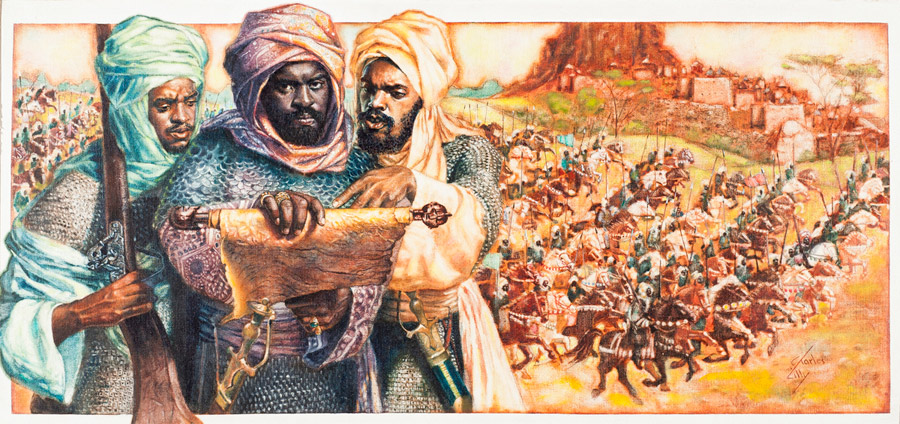
A mock-up of Alooma king of Kanem with guns
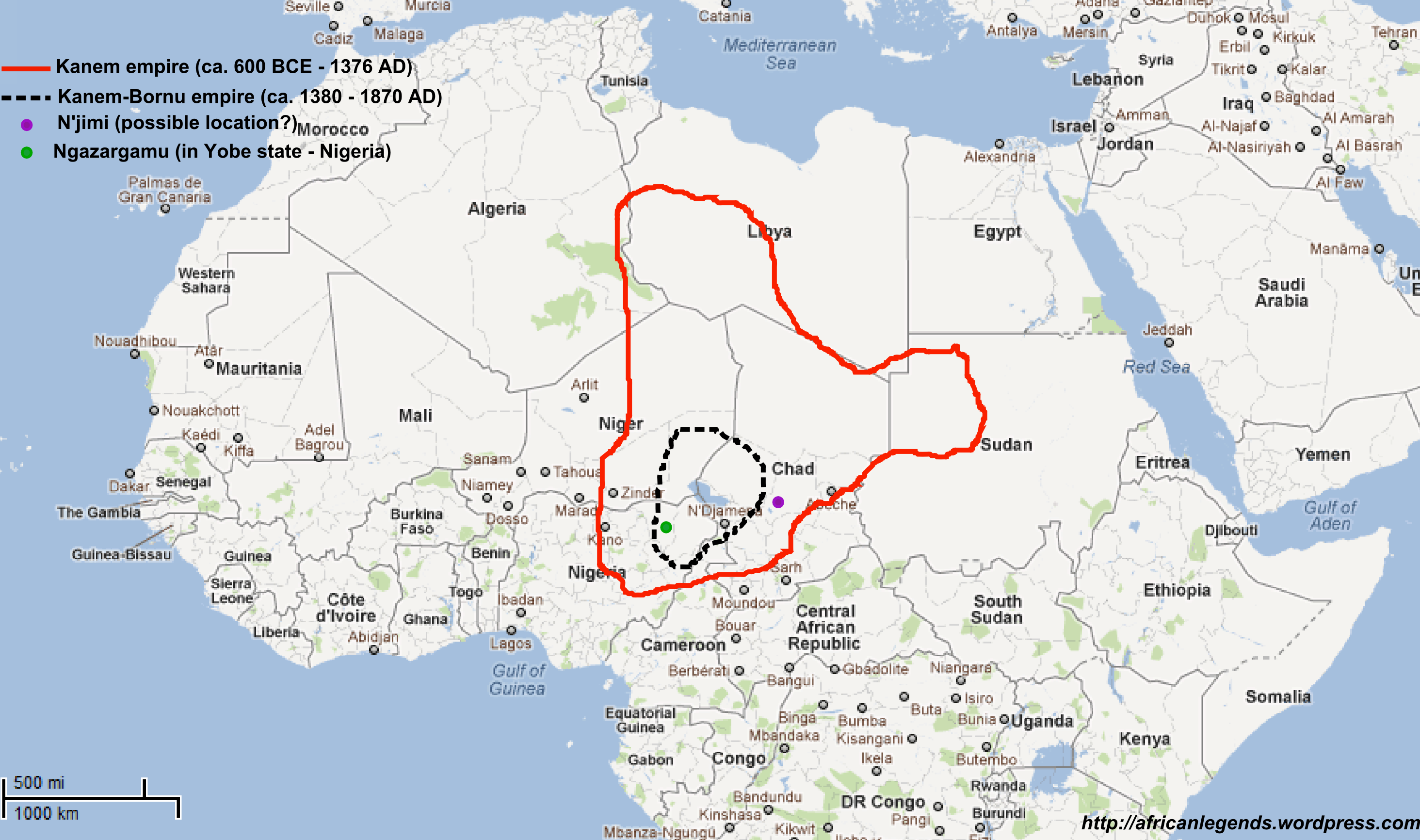
Kanem Bornu as you can see was at times quite extensive stretching deep into Libya and boarding Egypt and reaching in the Sudan,btw Idris had good relations with the Mamaluk rulers in Egypt from where he bought both slaves and fire arms to expand his empire,at one point a tribe of Arab crossed into Africa and were viewed as somewhat of a menace on his borders that he had subdued them not sure what to do with them so wrote to the ruler of Egypt asking for advice about whether he should enslave them or not as he was not sure if these Arabs were exempt from being Slaves, his council had reached an impasse about the nature of their religion,the Egyptian ruler wrote back to him telling him it's Okay if he found them to have heretics among them,needless to say people of Arabic origins were found on the coast of West Africa awaiting slave ships bound for the west,Remember these Mamaluk were of slave origins and maintained their power by taking and replenishing white slaves from their original home lands in the Caucasus,but their system was very mobile one can go from slave to king in that manner.
Even earlier in Kanem,for this Kingdom goes way back before Christ when they were two kingdoms before they were joined were acquiring slaves from east west north and south of them,even those who themselves were notorious traders and raiders in slaves,mainly the Arabs and Berbers in Africa.
A History of African Societies to 1870
Elizabeth Allo Isichei

A mock-up of Alooma king of Kanem with guns

Kanem Bornu as you can see was at times quite extensive stretching deep into Libya and boarding Egypt and reaching in the Sudan,btw Idris had good relations with the Mamaluk rulers in Egypt from where he bought both slaves and fire arms to expand his empire,at one point a tribe of Arab crossed into Africa and were viewed as somewhat of a menace on his borders that he had subdued them not sure what to do with them so wrote to the ruler of Egypt asking for advice about whether he should enslave them or not as he was not sure if these Arabs were exempt from being Slaves, his council had reached an impasse about the nature of their religion,the Egyptian ruler wrote back to him telling him it's Okay if he found them to have heretics among them,needless to say people of Arabic origins were found on the coast of West Africa awaiting slave ships bound for the west,Remember these Mamaluk were of slave origins and maintained their power by taking and replenishing white slaves from their original home lands in the Caucasus,but their system was very mobile one can go from slave to king in that manner.
Even earlier in Kanem,for this Kingdom goes way back before Christ when they were two kingdoms before they were joined were acquiring slaves from east west north and south of them,even those who themselves were notorious traders and raiders in slaves,mainly the Arabs and Berbers in Africa.
P. 43 According to Ibn Sa’id,
Quote:
the authority of the sultan of Kanim extended over Kawar and Fazzan, and the Berbers were slaves of the king of Kanim. He confirmed that during period of strength Kanim expanded northward into the Sahara, rather than southward.
page 44
This sultan has authority there over kingdoms such as those of the Tajuwa, Kawar, and Fazzan. God has assisted him and he has many descendants and armies. His clothes are brought to him from the capital of Tunish. He has scholars around him…
The region where Zaghawa wander is to the east of Manan. They are for the most part Muslims owing obedience to the sultan of Kanim. To the north of Manan are the terrirory of the Kanim the Akawwar wander. Their well-known towns are in the Second Clime and they are Muslims owing obedience to the sultan of Kanim.
[A mysterious passage tells of the visit of a black king from the desert edge state of Zafun to the Almoravid capital of Marrakesh. He rode his horse into the palace. 'The Commander of the Muslims met him on foot, whereas the [king of] Zafun did not dismount for him... he was tall, of deep black complexion and veiled]
A History of African Societies to 1870
Elizabeth Allo Isichei
edit on 21-9-2014 by Spider879 because: (no reason given)
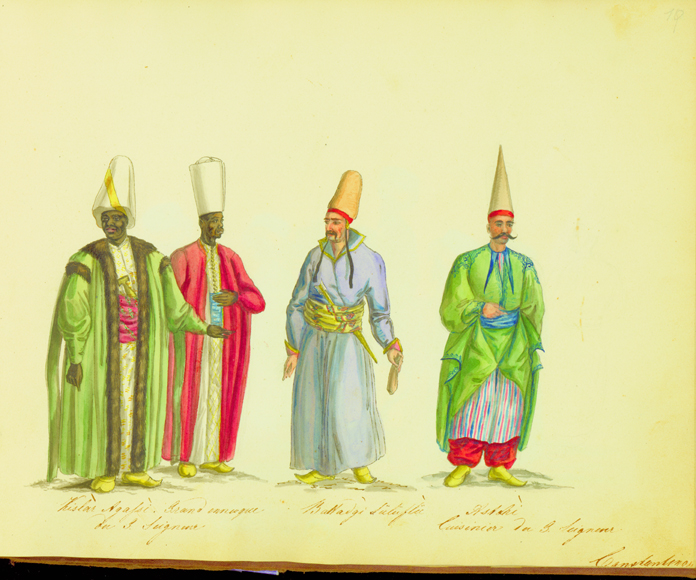
Black and White Eunuchs of the Ottoman empire,however the chief Black Eunuch was given more responsibility and status by tradition.
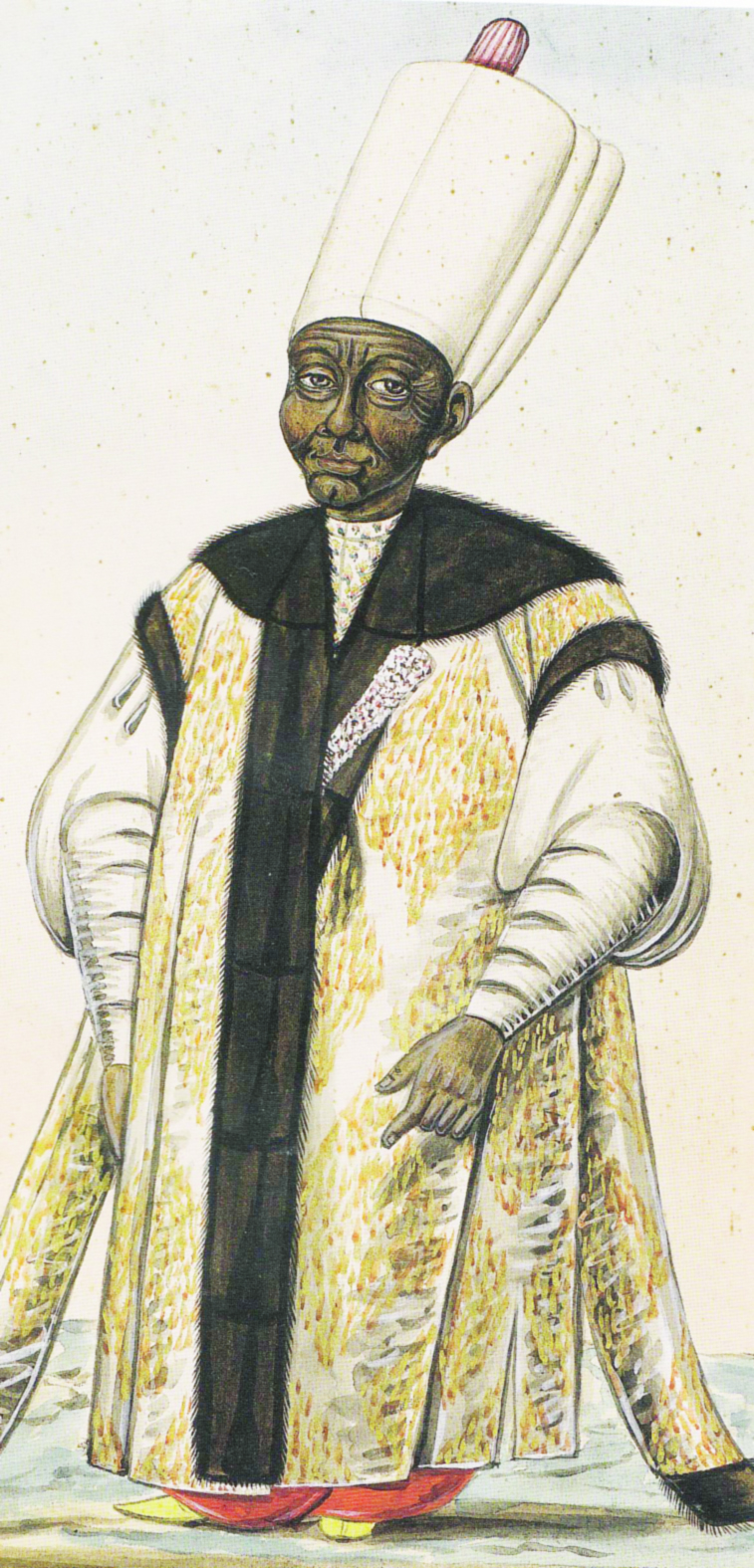
The Kizlar Agha: Ottoman slave:
Slave rulers:
As was mentioned there were slave who became prime ministers and governors,however closest to the King the were Eunuchs ,although they paid a steep price by having their man-hood removed they non the least held considerable power at court,they kept the flow of information to and from the King and controlled the nation's purse thus they were considerably wealthy often having private estates with less fortunate slaves toiling away for them, a slave soldier turned general or governor was a threat to the power of their king,but when slave governors,generals and Eunuchs plot it can end dynasties,that's the risk Western societies were unwilling to take because in the East it happened all the time such took place in Egypt,Arabia and India, Slave soldiers the Mameluke and the Habash or Sidis in India mirrored each other in that both groups the White Mameluke in Egypt and the Black Sidis in India usurped the thrones and ended dynasties, there is even an alternate view that the great Zanj rebellion lBlack slaves from East Africa ] in Iraq was not a slave rebellion it the usual sense but was funded by Swahili merchants in East Africa who had ties to slave generals with aim of controlling the trade in that area,although workers abuse of field slaves contributed to the rebellion, as proof this was the fact other native free born Iraqis and tribes joined the rebellion which killed an estimated 1 million people which is hard to believe for that time but that's what the writer at the time said.
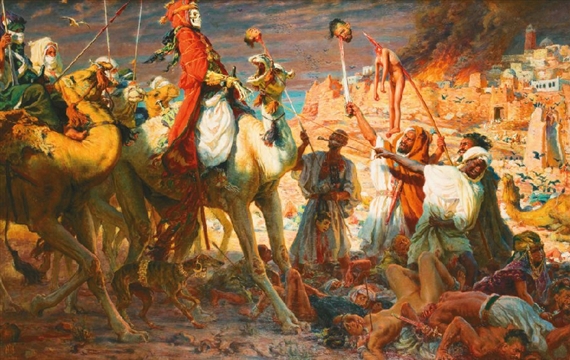
THE ZANJ REVOLT
The largest revolt by enslaved Africans was ignited by the Zanj against Arab slavers. The Zanj or Zinj were the inhabitants of the land along the coast of East Africa. They were traded as slaves by Arabs and were made to work in the cruel and humid saltpans of Shatt-al-Arab, near Basra in modern-day Iraq. Conscious of their large numbers and oppressive working conditions, the Zanj rebelled three times.
The largest of these rebellions lasted from 868 to 883 A.D., during which they inflicted repeated defeat on Arab armies sent to suppress the revolt. For some 14 years, they continued to achieve remarkable military victories and even built their own capital–Moktara, the Elect City.
atlantablackstar.com...
Another view is
The rise of the Shīʻa also occurred around this time, so the Abbasid government was fighting on two fronts.
Some scholars believe that the Zanj revolt was not necessarily a slave revolt. In this view, there were also Zanj immigrants in Iraq who were a big part of the revolt. M. A. Shaban argued:
"All the talk about slaves rising against the wretched conditions of work in the salt marshes of Basra is a figment of the imagination and has no support in the sources. On the contrary, some of the people who were working in the salt marshes were among the first to fight against the revolt. Of course there were a few runaway slaves who joined the rebels, but this still does not make it a slave revolt. The vast majority of the rebels were Arabs of the Persian Gulf supported by free East Africans who had made their homes in the region
en.wikipedia.org...
edit on 21-9-2014 by Spider879 because: (no reason given)
originally posted by: zardust
a reply to: Spider879
Game of Thrones is more than pure fiction, I mean it is, but its almost historical fiction. Like interpreted from real events. He has created a myth in the same way that the myths of old were created. His story is historically accurate, as far as the reality portions are concerned. The growth of powerful families, the vying for the throne, the old and new conflicts based around marriages, and honor, and spite. The children of the forest are the old druid/pagan culture that were forced off their lands/into hiding by the empire of men--the conglomeration of Earthly Kingdoms and the new gods (trinity instead of the sept.).
I think I recall reading an interview where he says as much.
Sometimes in Fantasy/Science Fiction you can get the message across without people rejecting it even if it has some comments on the current earth we live in.
Game of Thrones is a good example. Frank Herbert Dune is another where both middle east and spiritual knowledge can be discussed. Robert Jordan Wheel of Time is another series that shows human selfishness on the brink of global chaos and have borrowed much from real life mystics knowledge. Interesting to read about fictional Tel'aran'rhiod and dream walkers and then meeting a person who seem to have the dream walking ability.
new topics
-
What Is 'Quad Demic'? Mask Mandate Returns In These US States
Diseases and Pandemics: 2 hours ago -
The Future of fashion .
Social Issues and Civil Unrest: 2 hours ago -
Bin Cyber Junk…
Short Stories: 3 hours ago -
The Undertones - Teenage Kicks
Music: 4 hours ago -
Volcano Watch 2025
Fragile Earth: 4 hours ago
top topics
-
NJ Drones tied to Tesla explosion at Trump Las vegas
General Conspiracies: 15 hours ago, 11 flags -
Judge rules president-elect Donald Trump must be sentenced in 'hush money' trial
US Political Madness: 13 hours ago, 5 flags -
What Is 'Quad Demic'? Mask Mandate Returns In These US States
Diseases and Pandemics: 2 hours ago, 5 flags -
Volcano Watch 2025
Fragile Earth: 4 hours ago, 4 flags -
The Future of fashion .
Social Issues and Civil Unrest: 2 hours ago, 4 flags -
Farmers wife
Music: 14 hours ago, 2 flags -
Bin Cyber Junk…
Short Stories: 3 hours ago, 2 flags -
The Undertones - Teenage Kicks
Music: 4 hours ago, 1 flags
active topics
-
Vehicle Strikes people in New Orleans
Mainstream News • 294 • : xuenchen -
Candidate TRUMP Now Has Crazy Judge JUAN MERCHAN After Him - The Stormy Daniels Hush-Money Case.
Political Conspiracies • 2175 • : TzarChasm -
Orbs Appear And Form Triangle On Live Cam.
Aliens and UFOs • 24 • : DaydreamerX -
Bin Cyber Junk…
Short Stories • 2 • : JJproductions -
Labour Plotting to Postpone May's Council Elections ?
Regional Politics • 14 • : gortex -
-@TH3WH17ERABB17- -Q- ---TIME TO SHOW THE WORLD--- -Part- --44--
Dissecting Disinformation • 3925 • : Thoughtful3 -
What Is 'Quad Demic'? Mask Mandate Returns In These US States
Diseases and Pandemics • 16 • : MindBodySpiritComplex -
NJ Drones tied to Tesla explosion at Trump Las vegas
General Conspiracies • 29 • : Flyingclaydisk -
The Future of fashion .
Social Issues and Civil Unrest • 12 • : worldstarcountry -
Judge rules president-elect Donald Trump must be sentenced in 'hush money' trial
US Political Madness • 13 • : bluesman023
2
